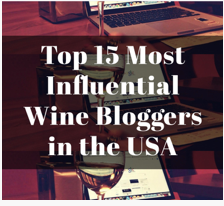Anyone with even a cursory knowledge of Oregon wine knows that the Willamette Valley “means” Pinot Noir. While some might take umbrage at that statement since the Valley has seen a growth in both white and sparkling wine production, Pinot still dominates the Willamette Valley scene much like Cabernet Sauvignon dwarfs all others in Napa Valley.
While I am not sure that is a bad thing (falling into the “if it ain’t broke, don’t fix it” category), it seems as though for the past decade or more, people have been searching for a “signature” white to help define the region.
By acreage planted, one could argue that Pinot Gris is “the” white wine of Oregon’s most prominent wine region and, at least in my opinion (which might ruffle some feathers in Washington and New York State), I think the best Rieslings in the country come from the Willamette (before you argue, try some of the many Rieslings produced by Brooks Wine in the Eola – Amity Hills AVA).

The problem as I see it, though, is that Americans have trouble understanding those two varieties. The whole Pinot Gris/Grigio conundrum could take up an entire week’s worth of posts and Riesling suffers from its sweet past.
That is perhaps why, over the last decade or so, plantings of Chardonnay have steadily increased in the Willamette Valley, to the point that the acres under the variety are roughly half of what is dedicated to Pinot Gris. Part of that increase, certainly, is due to the somewhat dramatic increase in sparkling wine production (as Chardonnay is a key component to many sparklers), but there has also been a rise in still Chardonnay wines as well.
As the most widely planted white wine grape in the world, Chardonnay does not need to be explained much to the wine-drinking public. And since the relative boon in Willamette Chardonnay is recent, winemakers were able to learn from the mistake (yes, I will call it a mistake) made by many Californian Chardonnay producers of over-oaking their wines to the point that there was a severe backlash by the American consumer.
While many Californian producers are now struggling to find the proper amount of oak to be used, their counterparts in the Willamette are making beautiful wines with much more modest oak programs.
While I would argue that the Willamette Valley does not need a signature white, after tasting through a bunch of Chardonnays from the Valley, the signature white grape from Burgundy could certainly fit the bill.
A couple weeks ago, I published my notes from a few Willamette Valley Chardonnays, and here are a handful more.
 2019 Marshall Davis Chardonnay, Yamhill-Carlton, Willamette Valley, OR: Retail $25. Under screw cap. This appears to be M-D’s entry-level Chard as there is at least one more in their portfolio at a higher price point ($40). Although I have been to the Willamette Valley many times, I am fairly certain I have never tried wines from this producer before, but I will not make that same mistake on my next trip to the Valley. At twenty-five bucks, this certainly delivers with great fruit, a healthy dose of tartness, and enough depth to make me wonder why is this wine so affordable? Very Good. 88 Points.
2019 Marshall Davis Chardonnay, Yamhill-Carlton, Willamette Valley, OR: Retail $25. Under screw cap. This appears to be M-D’s entry-level Chard as there is at least one more in their portfolio at a higher price point ($40). Although I have been to the Willamette Valley many times, I am fairly certain I have never tried wines from this producer before, but I will not make that same mistake on my next trip to the Valley. At twenty-five bucks, this certainly delivers with great fruit, a healthy dose of tartness, and enough depth to make me wonder why is this wine so affordable? Very Good. 88 Points.
 2018 Raptor Ridge Chardonnay Gran Moraine Vineyard, Yamhill-Carlton, Willamette Valley, OR: Retail $30. Under screw cap. Once I started doing my annual tastings of American True Rosé, Pinot Noir, and sparkling wines, Raptor Ridge often submitted samples. And while my reviews have not always been overly glowing or effusive, I hope they have been seen as honest. I have never visited the winery nor have I met (outside of a recent Zoom call) the owners or anyone associated with the brand. Having said all of that? I really, really want to visit the winery and meet those involved. Why? It seems abundantly clear that the folks at Raptor Ridge are doing it all the right way–trying to produce the best wines while simultaneously trying to do what is best for the planet. Bravo. As for this wine? The pale straw wine with aromas of lemon curd, verbena, and even eucalyptus might be my favorite I have tried from the winery thus far. The palate is fruity, tart, and focused, providing those who fear an oaky Chard shelter from the storm. Lovely. Excellent. 91 Points.
2018 Raptor Ridge Chardonnay Gran Moraine Vineyard, Yamhill-Carlton, Willamette Valley, OR: Retail $30. Under screw cap. Once I started doing my annual tastings of American True Rosé, Pinot Noir, and sparkling wines, Raptor Ridge often submitted samples. And while my reviews have not always been overly glowing or effusive, I hope they have been seen as honest. I have never visited the winery nor have I met (outside of a recent Zoom call) the owners or anyone associated with the brand. Having said all of that? I really, really want to visit the winery and meet those involved. Why? It seems abundantly clear that the folks at Raptor Ridge are doing it all the right way–trying to produce the best wines while simultaneously trying to do what is best for the planet. Bravo. As for this wine? The pale straw wine with aromas of lemon curd, verbena, and even eucalyptus might be my favorite I have tried from the winery thus far. The palate is fruity, tart, and focused, providing those who fear an oaky Chard shelter from the storm. Lovely. Excellent. 91 Points.
 2018 Rex Hill Chardonnay Seven Soils, Willamette Valley, OR: Retail $35. Heavy Bottle. Under cork. The wine is sourced from six vineyards (which causes some confusion as to the name Seven Soils) and aged for eleven months in French oak (12% new). While I have been to Rex Hill, it has to have been almost a decade since I was there, thus necessitating a return. It has been owned by A to Z Wineworks since 2007 and serves as the premium wine brand for A to Z. Straw to yellow in the glass with lemon rind, verbena, and touches of oak and vanilla. The palate is bright, refreshing, and layered, very nice. Excellent. 90 Points.
2018 Rex Hill Chardonnay Seven Soils, Willamette Valley, OR: Retail $35. Heavy Bottle. Under cork. The wine is sourced from six vineyards (which causes some confusion as to the name Seven Soils) and aged for eleven months in French oak (12% new). While I have been to Rex Hill, it has to have been almost a decade since I was there, thus necessitating a return. It has been owned by A to Z Wineworks since 2007 and serves as the premium wine brand for A to Z. Straw to yellow in the glass with lemon rind, verbena, and touches of oak and vanilla. The palate is bright, refreshing, and layered, very nice. Excellent. 90 Points.
 2019 Siduri Chardonnay, Willamette Valley, OR: Retail $30. Under screw cap. Adam Lee made the name Siduri through his adept handling of some of the best Pinot Noir fruit in California. Since he sold the brand to Jackson Family Wines, the focus has shifted somewhat to incorporate other varieties and regions. Case in point. This light straw, tasty Willamette Valley Chardonnay has oodles of citrus fruit, a fair amount of toasty goodness, and an abundance of white flower aromas. The palate? Perhaps better than what the nose portends with fruit (albeit subtle), crisp acidity, and more than an ounce of verve. Sure, there are better Chards out there with more “interesting” pedigrees, but for around twenty-five bucks? It would be difficult to beat this one. Excellent. 90 Points.
2019 Siduri Chardonnay, Willamette Valley, OR: Retail $30. Under screw cap. Adam Lee made the name Siduri through his adept handling of some of the best Pinot Noir fruit in California. Since he sold the brand to Jackson Family Wines, the focus has shifted somewhat to incorporate other varieties and regions. Case in point. This light straw, tasty Willamette Valley Chardonnay has oodles of citrus fruit, a fair amount of toasty goodness, and an abundance of white flower aromas. The palate? Perhaps better than what the nose portends with fruit (albeit subtle), crisp acidity, and more than an ounce of verve. Sure, there are better Chards out there with more “interesting” pedigrees, but for around twenty-five bucks? It would be difficult to beat this one. Excellent. 90 Points.







